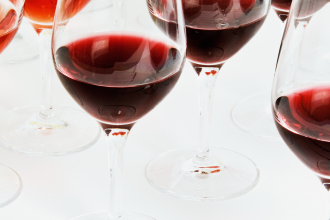The California wine industry seems to be in an experimental phase. Not like the one you went through in college. No, no, much better. New and different grapes are being planted, grown, blended and perfected on the left coast.
Many winemakers love to try different things, but this little revitalization in particular is bringing about some wonderful success stories, making “weird” grapes nice and accessible to you! Here are just four: two white and two red. Four little grapes, each with a unique story to tell.
1) Vermentino: So, perhaps you’ve heard of this one, it has been finding much success and praise of late in California and is finally on everyone’s radar. Vermentino is a grape that loves to grow near oceans, Provence, France, the islands of Corsica & Sardinia, and coastal Tuscany. You gotta admit, this grape has good taste. Vermentino can offer a wide range of fun aromas and tastes- from apple and fresh flowers to ripe citrus, melon and tropical fruit. It almost always has a nice degree of minerality and acid that keeps it from feeling weighty. A great pick for when you want to branch out from a Pinot Gris or Grigio, but don’t necessarily want an extremely full-bodied wine.
Notable producers: Tablas Creek, Uvaggio, Steve Matthiasson’s “Tendu” (a blend of Vermentino, Cortese and Arneis), Rhyme.
2) Tocai Friulano: This grape has a somewhat sordid and confusing history. Friulano is one of the Friuli region of Italy’s most prolific table whites. For centuries it was known as Tocai Friulano. The wines can be anything from light and clean to a bit richer and more textured. Meanwhile, Tokaji is a specific style of wine made in the Tokaj region of Hungary. It really doesn’t have anything to do with Tocai Friulano. They are usually sweet in style, and made from some wacky Hungarian grapes. However, some time ago, Hungary got upset about the use of the word Tocai in front of Friulano. So, now Italy simply calls theirs Friulano and California’s version is known as Tocai Friulano. Phew.
Central Caliis known for a few stellar versions of Tocai Friulano; it is genetically related to Sauvignon Blanc, and much like the Italian versions, they can be light, fresh and zesty, or rich and full with notes of mango, glazed pears, and honeysuckle. Yum.
Notable producers: Folk Machine, Palmina, Clendenen Family Vineyards.
3) Trousseau: If Trousseau were a person it might look a little hipstery. Wine nerds LOVE this grape, and they especially love the California versions that have been popping up. Why? Well, all wine nerds are required to love the Jura region and this is Trousseau’s native home- an obscure little spot in North-Eastern France, close to Switzerland. Trousseau is a grape capable of producing powerful aromas, yet it has a relatively pale color. Redcurrant, strawberry and potpourri backed by beautiful, poignant spice. Often with a nice bite of tannin, yet an uplifting finish. What California has accomplished with Trousseau is actually quite amazing, and has really captured the wine world’s attention.
Notable producers: Arnot Roberts, Copain.
4) Valdiguié: (vall-da-GEE-ay). Often called “Napa Gamay”, this grape has been a California workhorse for quite some time, and is just now getting the props it deserves. A handful of winemakers really champion its cause. The grape has humble roots- seen as a rather ordinary varietal from the Southwest of France; it has high yields and fights off the curse of powdery mildew easily. Late 70’s California seemed to love it. Somewhere along the way, it fell from grace and was labeled “mediocre,” plantings were ripped out left and right.
Slowly this grape is being rediscovered and gaining momentum. Valdiguié is easy to like- always very fresh and vibrant, two characteristics it does share with the actual grape Gamay, but with a medium saturation and lots of red fruit. Aromatic, fun to drink, and often a killer value.
Notable producers: J. Lohr, Broc, Hitching Post (blended).








